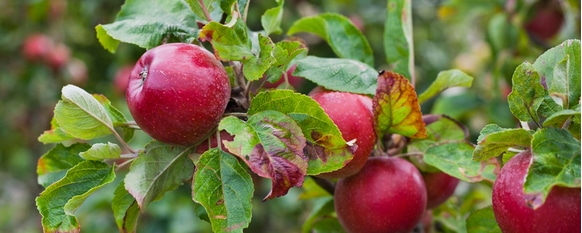There are very few things more discouraging than walking outside to check on your fruit tree and see that it’s suffering from some disease problem. No one wants to see their beautiful apples with blemishes or rot. Trying to diagnose it can be a headache, but you don’t want to spray a chemical on it and hope for the best.
Apple can be infected by fungi, water molds, bacteria, and viruses. To help make diagnosing problems easier, let’s talk about the most common diseases, including their symptoms, the varieties they infect, and how to treat them.
If you have boxwoods growing on your property, you’ll likely need to learn how to prune your boxwoods properly to prevent diseases and encourage healthy growth. Make sure to check our article out!
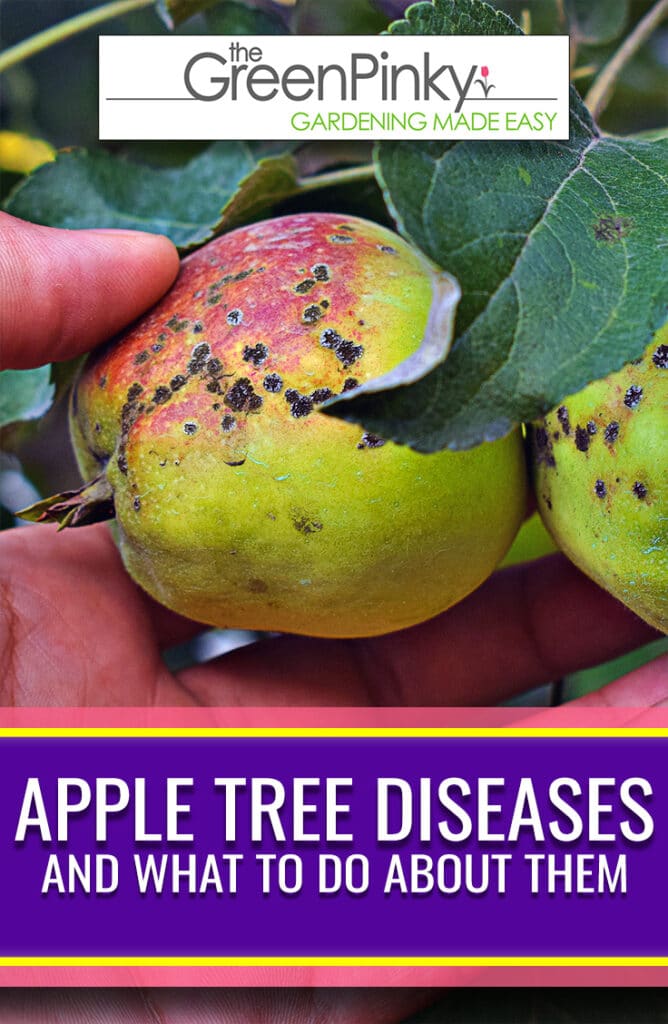
Fungal & Water Mold Infections
Apple Scab
Apple scab disease is caused by Venturia inaequalis, a fungus that is transferred through rainfall. Thankfully it rarely kills the entire specimen, but when severe enough, it causes defoliation and weakens the tree overall, making it more susceptible to other diseases and stressors. The best way to avoid apple scab is to plant disease-resistant varieties.
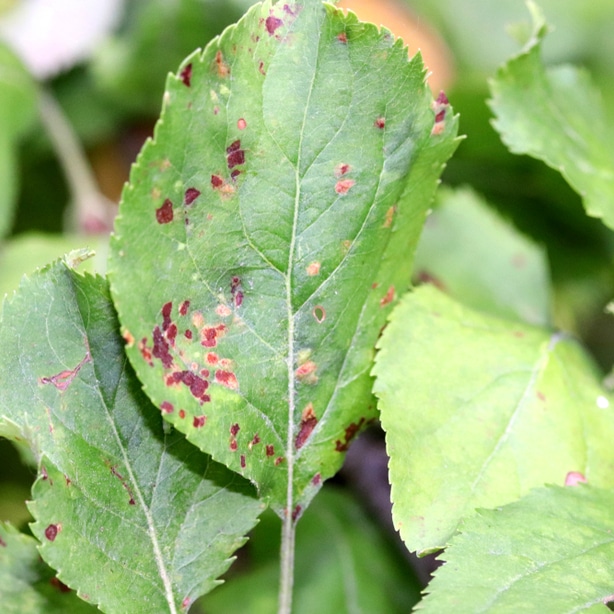
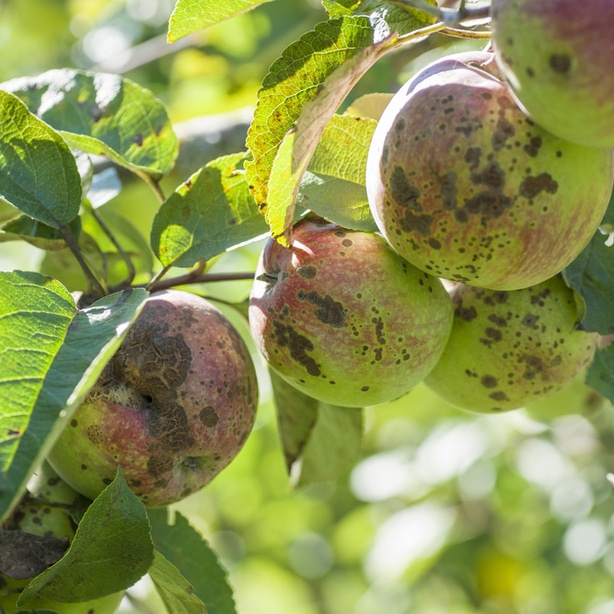
Symptoms: small brown or green lesions on the undersides of leaves, progressing to little brown scabs on leaves and fruit
Affected Varieties: McIntosh, Red Delicious, Cortland, Rome Beauty
Treatment: Spray with an approved fungicide if the infection is severe. Make sure to rake up and remove all infected leaves that have fallen to the ground.
Cedar Apple Rust
Cedar apple rust is the most common type of rust found on Malus cultivars, and it occurs when trees are grown close to Eastern Red Cedar or other junipers. The fungus overwinters in galls found on infected branches. In the spring, when conditions are wet, the galls swell up and produce a gummy-like fungal growth that transfers spores to apples.
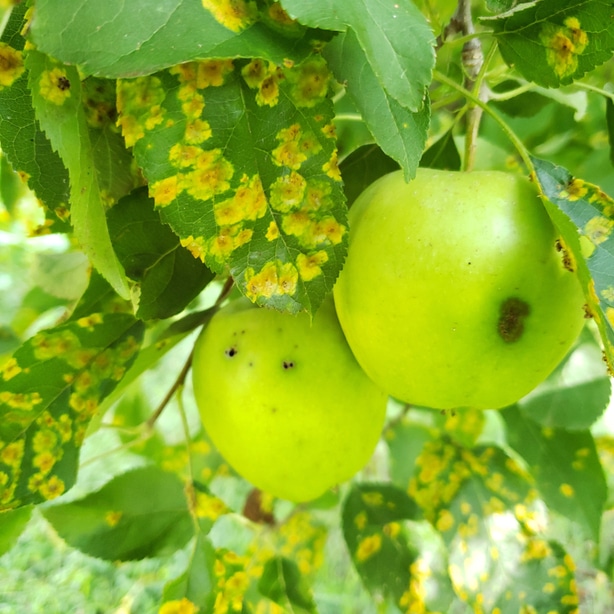
Symptoms: Yellow or orange spots on upper leaf surfaces, with a black dot in the center; galls on branch tips with bright orange, jelly-like tubes
Affected Varieties: Golden delicious
Treatment: Remove infected leaves and fruit, spray with a copper-based fungicide
Powdery Mildew
One of the most common fungal diseases in garden plants is powdery mildew. It presents as a dusting of white or light-colored powder on plant parts. Caused by the fungus Podosphaera leucotricha, it often thrives in damp environments and humid climates. The fungal spores travel within the plant and between trees by moisture and wind.
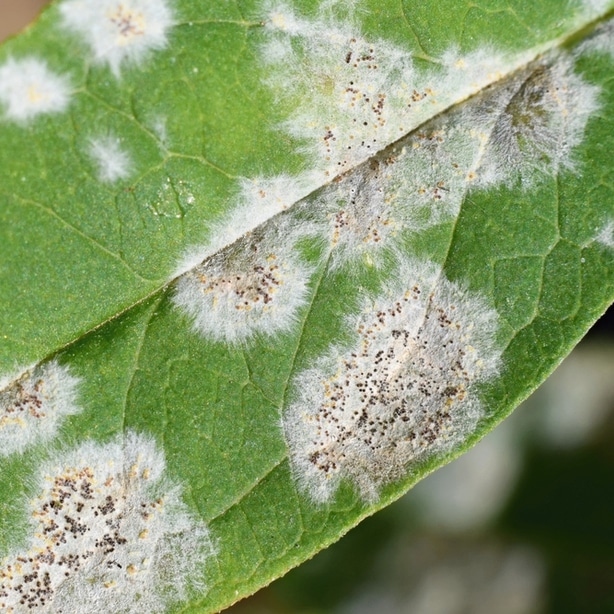
Symptoms: white or grey powder spots on stems, leaves, and buds; buds may not open; lack of fruit development
Affected Varieties: Cortland, Empire, Granny Smith, Jonathan, Jonagold, Pink Lady, Winesap
Treatment: Remove infected plant parts using clean, sterile gardening tools. Then treat the infected tree and neighboring bush with neem oil or a fungicide such as myclobutanil and fenbuconazole.
Anthracnose Canker
Anthracnose canker severely impacts orchards and commercial production operators in the maritime Pacific Northwest and other regions with similar climatic conditions. The disease is caused by two types of Neofabraea fungi (N. malicorticis and N. alba), and when left untreated, it progresses into an infection known as bull’s-eye fruit rot. Infection typically erupts during fall rains.
Symptoms: small circular spots on the bark that appear reddish when moist; as they enlarge, they become sunken and elongated, changing to orangish-brown
Affected Varieties: All cultivars are susceptible
Treatment: Prune out all the cankers and burn affected material if permitted in your area. Remove the entire tree if the infestation is severe. Treat the tree and neighboring plants with a fungicide.
Sooty Blotch and Flyspeck
While different fungi cause these diseases, they are often grouped as they frequently occur at the same time on fruit that is close to maturation. The fungi overwinter in the branches, as well as pear trees and other woody plants. Spores of the two diseases then splash onto the fruits during rainfall events, causing blemishes but no physical harm.
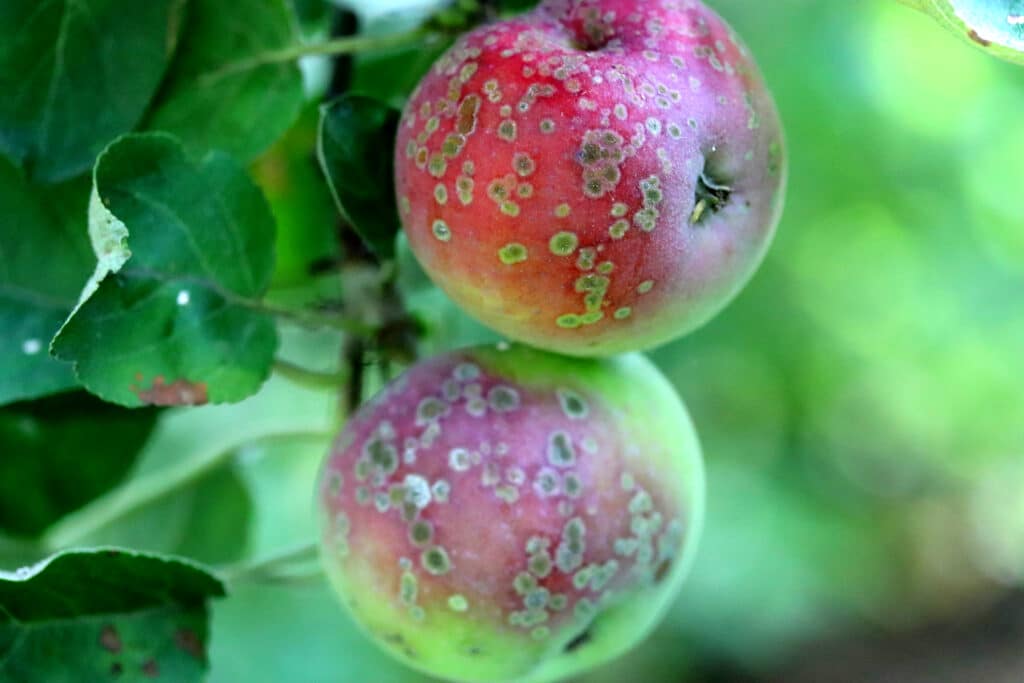
Symptoms: flyspeck appears as circular clusters of tiny, defined black dots; sooty blotch forms irregular, olive-green blemishes
Affected Varieties: All types, but yellow varieties show most severe symptoms
Treatment: No chemical control available
Bitter Rot
Bitter rot occurs in all states where apple trees are grown and typically shows up in July and August. Colletotrichum gloeosporiodes, C. acutatum, and Glomerella cingulata fungi overwinter in dead branches, splits in the bark, or mummified fruit infected the previous season. It then penetrates through the skin on fruits, typically affecting the side directly exposed to the sun.
Symptoms: Lesions on fruit with concentric rings, sour-smelling rot
Affected Varieties: Empire, Honeycrisp, Mclntosh, Sunrise, Paulared, and Jonagold
Treatment: Remove diseased fruit, dead wood, and any cankers. Treat with fungicide every 10 to 14 days through harvest.
After reading this article on diseases, make sure to also check out our general guide on raising apple trees.
Black Rot and Frogeye Leaf Spot
Physalospora obtusa (syn. Botryosphaeria obtusa) causes both black rot and frogeye leaf spot, but at different points in its life cycle. When immature, the disease is known as frogeye leaf spot. As it matures, the infection spreads to the branches and forms cankers which kill the tree. At this point, it becomes black rot.
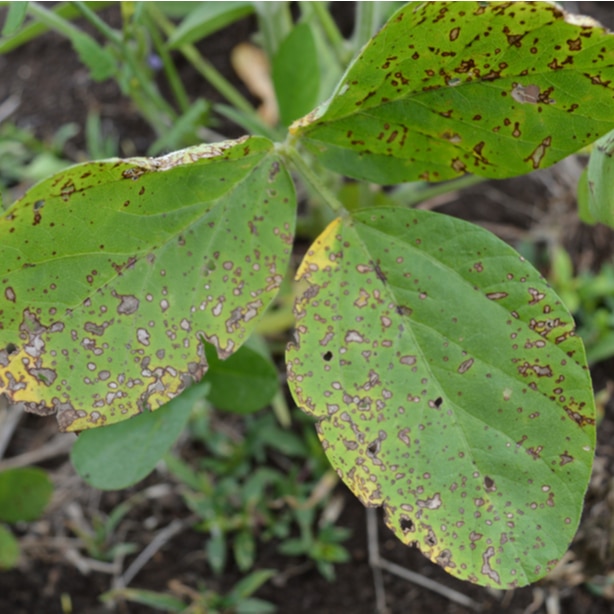
Symptoms: brown spots on flower ends of fruits, progressing to rot; purplish-brown spots on leaves that look like frog eyes; during final stages, cankers form on branches
Affected Varieties: Empire and Cortland are the most susceptible cultivars.
Treatment: Prune all the infected parts of the tree and either burn or get rid of them as quickly as possible. You may spray with sulfur or an appropriate fungicide in the early stages of the disease.
White Rot
Also known as Bot Rot, white rot is caused by the fungus Botryosphaeria dothidea. Compared to the other common diseases, it is a relatively weak pathogen. Trees typically only become infected when stressed. But fruit loss can be heavy, so it’s essential to watch for it. The symptoms can be difficult to distinguish from black rot cankers.
Symptoms: cankers on the tree in early summer; sunken brown spots on fruit with a red halo; fruit bleaches and decays, turning light brown
Affected Varieties: Golden Delicious, Empire, Jersey Mac are most susceptible
Treatment: Prune out infected branches and remove affected fruit, disposing of it properly. Spray with a recommended fungicide.
Southern Blight
Most commonly found in the southeastern part of the United States, from North Carolina to regions further south, the fungus Sclerotium rolfsii causes southern blight. Young specimens (1 to 3 years old) are the most susceptible to infection and quickly perish. Trees typically become resistant to the disease as they age and their bark thickens.
Symptoms: web-like white mycelium on the lower trunk progressing upward in a fanlike pattern
Affected Varieties: All rootstock varieties are susceptible to infection
Treatment: No chemical treatment available. Remove the entire tree and discard.
Phytophthora Crown Rot, Collar Rot, and Root Rot
Diseases caused by Phytophthora are among the most serious problems that affect apple trees. Phytophthora is closely related to the destructive organism responsible for the Irish potato famine. It was initially thought to be a fungus, but research has determined it’s a water mold. The name of the specific disease designates where on the tree is affected.
Symptoms: loss of vigor, yellowing leaves, the entire tree may collapse
Affected Varieties: All cultivars are susceptible
Treatment: Severely infected trees should be removed. For minor infections, you can try cutting away the diseased tissue, leaving the trunk area open to dry. Then, spray the root zone surrounding the infected specimen with mefenoxam or metalaxyl.
Bacterial Infections
Fire Blight
Commonly found in both apple and pear trees, fire blight is very destructive, quickly killing specimens. Caused by the bacterium Erwinia amylovora, the infections typically occur during bloom or in the three weeks following until petal fall. The bacteria survive in cankers that appear as sunken lesions on the tree and are most active when temperatures are about 70 degrees Fahrenheit.

Symptoms: blossoms, stems, leaves, and shoots develop a fire-scorched appearance; leaves and twigs wilt and curl
Affected Varieties: Braeburn, Fuji, Gala, Golden Delicious, Granny Smith, Idared, Jonagold, Jonathan, McIntosh
Treatment: No chemical control available. Remove and discard infected trees
Crown Gall
Crown gall is devastating to many plants, and apple trees are not exempt. A bacteria called Agrobacterium tumefaciens harbors in the soil and then enters through a wound on the bark. Once inside the tree, it then inserts a tumor-inducing gene into the plant’s DNA, altering the normal plant cells. Crown gall occurs most often in the summer.
Symptoms: small, spherical swelling around the crown, galls harden into a dark wooden mass, also causes stunting, dieback, leaf discoloration
Affected Varieties: All varieties are susceptible
Treatment: Once infected, there is little chance of treating crown gall. It’s best to remove and destroy the infected plant. Then treat the soil with a registered bacteriacide.
Viral Infections
Flat Apple Disease
Caused by the cherry rasp leaf virus (CRLV), flat apple disease is found in the Western United States and north into British Columbia. The virus first infects common orchard weeds and is transmitted slowly through apple and cherry orchards via dagger nematodes. Affected fruits are distinctly flattened and about half their normal length.
Symptoms: leaves roll up from midrib, fruit is flattened from both sides
Affected Varieties: Red Delicious, Yellow Delicious
Treatment: No available control or cure. Infected trees should be removed and discarded.

